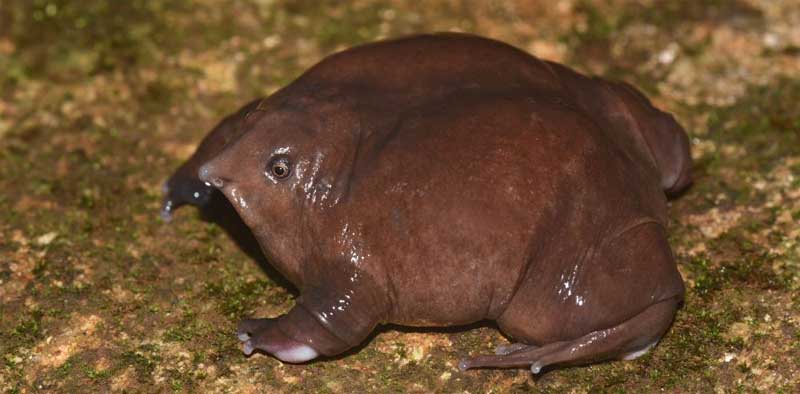

Herpetologists believe that the species should be rightly called a ‘living fossil’ as its evolutionary roots suggest it could have shared space with dinosaurs going back almost 70 million years ago.
The Purple frog (Nasikabatrachus sahyadrensis), a peculiar and elusive amphibian species endemic to the Western Ghats, is poised to be crowned the state amphibian of Kerala. This honour, conservationists and herpetologists believe, will go a long way in securing its fragile habitat. Often referred to as the 'Maveli' frog by local researchers, the species draws a curious parallel to the myth of King Mahabali, also known as Maveli, a benevolent ruler who is said to visit his people once a year during Onam. Similarly, the Purple frog spends almost its entire life underground, emerging only for a single day each year to breed, before disappearing back into the depths of the soil. This rare appearance has fascinated scientists and locals alike, adding cultural and ecological significance to the species.
First described by scientists only in 2003 from the forests of Kerala, the Purple frog has since sparked intense global scientific interest. Its bloated, awkward appearance, marked by a pig-like snout and powerful hind limbs, is matched only by its evolutionary mystery. Herpetologists consider it a 'living fossil', as its lineage can be traced back some 70 million years, suggesting it may have coexisted with dinosaurs. The species' closest known relatives are found not in India, but in the Seychelles, leading scientists to theorise a shared ancestry dating back to the ancient supercontinent Gondwanaland. The physical isolation of these frogs across distant continents supports the idea that they diverged when the landmasses separated, offering living proof of deep-time evolutionary patterns.
Despite its ancient roots, the Purple frog's survival is increasingly threatened. Over 50 per cent of its habitat lies outside protected zones, leaving it highly vulnerable to human encroachment. Deforestation, agricultural expansion, illegal construction, and the proliferation of roads have fragmented the frog's environment. Seasonal streams, crucial for the frogs' breeding, are often obstructed or destroyed by unauthorised check dams. At the same time, nearby road networks result in dozens of road kills during their short surface visits to lay eggs. In one tragic instance in Nelliyampathy, researchers found 36 frogs and their eggs crushed by vehicles within just two hours. Additionally, the use of pesticides, climate change, and exploitation for local consumption and traditional medicine have put further pressure on this already endangered species, listed on the IUCN Red List.
Understanding the Purple frog's lifecycle remains a challenge due to its subterranean habits. It took researchers nearly seven years to uncover details about its breeding and feeding. The frogs use their fluted tongues to consume soil mites, ants, and termites. Mating occurs underground, and the females emerge during early monsoon showers, timed almost perfectly with the first rains, to lay thousands of eggs near seasonal streams. The tadpoles that emerge resemble suckerfish and cling to rocks in fast-flowing water, feeding on algae. After approximately 120 days, they undergo metamorphosis and retreat underground, where they spend the remainder of their lives. Even now, researchers are unsure how deep they burrow or what conditions they inhabit during their time beneath the Earth's surface.
Driven by the urgent need for protection, researcher Sandeep Das of KFRI has proposed the designation of the Purple frog as Kerala's state amphibian. The proposal, which is expected to be tabled at an upcoming Wildlife Advisory Board meeting, has received strong backing from scientists and board members, who agree that no other species is as uniquely deserving. Recognising the Purple frog as an 'umbrella species'—much like how the tiger symbolises conservation across India's forests—could help safeguard the broader ecosystem of the Western Ghats. This region, a UNESCO World Heritage Site and one of the eight "hottest hotspots" of biodiversity in the world, is home to thousands of endemic species found nowhere else on Earth. However, development pressures, climate shifts, and inadequate protective measures continue to erode this ecological treasure trove.
Designating the Purple Frog as the state amphibian would not only highlight its ecological and evolutionary importance but also promote awareness and mobilise efforts for its conservation. It is a powerful symbol of Kerala's rich natural heritage—a species that has endured through millennia but now stands at the edge of survival due to modern-day threats. As Das and other researchers argue, this ancient, shy amphibian could well become the ambassador for Western Ghats conservation, reminding us of the urgent need to protect what little remains of Earth's prehistoric biodiversity.
Published on: Sunday, May 5, 2019